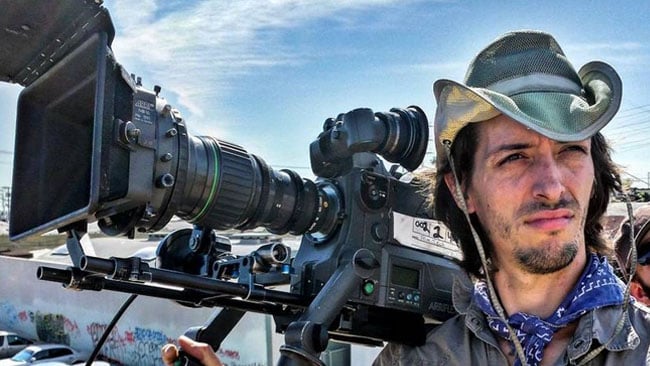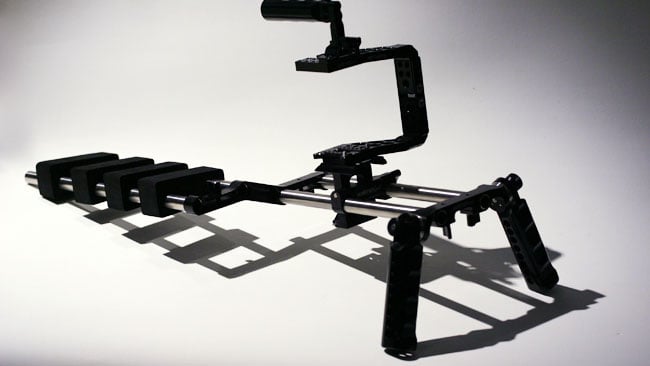RedShark Replay: When done right (and in the right circumstances), going handheld can add a certain intensity to your scenes, especially if you have a skilled camera operator in tow.
Modern filmmakers are, perhaps notoriously, obsessed with frame rates, pixels and resolution, possibly because these things are unequivocal: more is better. The things that actually differentiate good work from bad, that separate watchable, convincing work from the mediocre, are much more subjective, but arguably more important, especially now that essentially all cameras are so good. We've discussed production design many times, so today we're going to look at something that's just as crucial and just as capable of being done on anything from an Alexa to a cellphone: blocking and framing, which involve a bit of directing, but an awful lot of operating.
Camera operating is, like sound recording, invisible when done well. When new filmmakers are in that rather chaotic self-directed phase of short filmmaking, operating is often one of the last things they're willing to give up, because pointing the camera at a subject feels like such a fundamental part of the process and, frankly, because it seems easy, which is by far the bigger problem. It's easy to find out that most prominent productions use operators; it's harder to persuade the writer-producer-director-DP-operator-editor of a microbudget project that part of that microbudget might be well spent on someone to ensure the frame is well-composed and doesn't contain any egregious pieces of equipment. Most people need to spend a lot of expensive time producing rough-looking material before they realise that camera operating is not 'invisible because it's easy'.
Shoulder slingers


Now, there's no need for dedicated equipment enthusiasts to get depressed, because, of course, the grip department gets access to some of the most celebrated, finely-engineered and most impressive pieces of equipment on a modern set. In some cases, as with a big crane, while we refer to the person who's operating the remote head as the operator, the job is greatly divided into three or four people – more, if we include people like the focus puller, who may in some instances, be telling the audience what to look at in no uncertain terms. This article arises, however, from a series of conversations on camera operating at the opposite extreme of technological sophistication: the handheld camera.
Anyone who's ever thought about shooting handheld will have her-or-his own list of reasons, but it seems worth a recap. It's fast, making it easy to get through script pages quickly and to steal shots in places where permission is difficult to get. It adds energy or, at the very least, it avoids the amateurism of the perpetually static camera. It requires little equipment and it's a technique that's equally accessible to filmmakers at all levels, so it can be a great leveller. The problem is that all of these things are so well-known that they've become clichés, at least in the popular imagination. The intrinsic rebelliousness of the handheld camera, as established by the documentary filmmakers of the 1960s, is long since worn out. Now, it risks being seen as a desperate attempt to seem edgy or a cover-up for other inadequacies in production design, location or action.


These concerns gain a lot of traction because they stem from a relatively recent peak in the popularity of handheld shooting, which was typified by films such as Saving Private Ryan in the late 90s. That's recent enough to be in the common consciousness, but long enough ago that it has begun, at least in the whimsy of fashion, to seem a little old hat. If we wanted to argue that point, we could refer again to the Pennebaker documentaries of the 60s, illustrating the fact that, if there were some sort of universally determined best-before date on a cinematographic style, handheld camerawork, in general, had been common for long enough to go bad even before Spielberg used it for his beach landing sequence.
Handheld freedom
Of course, there is no such general acceptance of any time limit on camera technique and we don't need a reason to defy fashion or expectation in any case (quite the opposite, many would say). That's not nearly as good an artistic justification, though, as the realisation that the received knowledge about handheld we discussed above is really a bit facile and obvious. Yes, it works as an archetype for action scenes, but it can also do amazing things for a tender conversation over a romantic dinner, making the viewer either personally involved or a voyeuristic interloper, depending largely on the angle between the camera and the line of the scene.
If handheld camerawork suffers a poor reputation among independent filmmakers, it's largely due to the feeling that it's some sort of excuse for a lack of real technique and, if there's any validity to that, it's because there's a too-common impression that it doesn't require any technique. When we think about it, it's obvious that blocking and framing remain as crucial as ever and, even more so, because the relative freedom of the handheld camera encourages us (or should encourage us) to set up more elaborate shots. If handheld can get a small production away from looking like a series of fluid-head tripod shots cut awkwardly together, which is too often the alternative, then it's a good thing.
All of which, of course, brings us back to the operator. Handheld looks wildly different on different lenses and the technique applied changes the look, too. On long lenses, a slack fluid head following violent action can look almost like handheld in any case. Rolling shutter cameras are another concern: in the worst case, they may not be suitable for handheld camerawork at all and there's a dearth of alternatives. Some cameras, particularly DSLRs, may be difficult to handhold at all and risk producing a hesitant, ugly frame because of their ergonomic failings. The difference between a rolling-shutter DSLR and a global-shutter camera shot from the shoulder, such as an Ursa Mini 4K, may be profound.
Independent filmmakers in 2016 are probably too quick to write off handheld operation, possibly because it's so often done badly on the wrong equipment for reasons that don't really serve the story. However, that doesn't necessarily make it a bad thing to do.